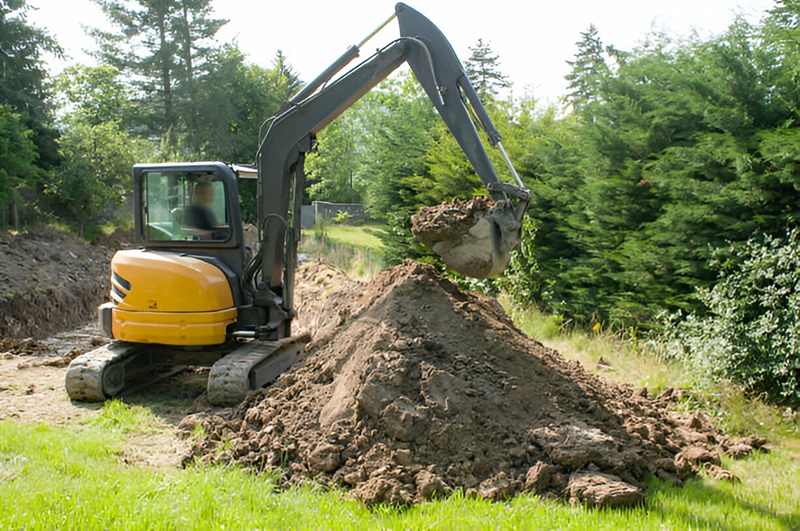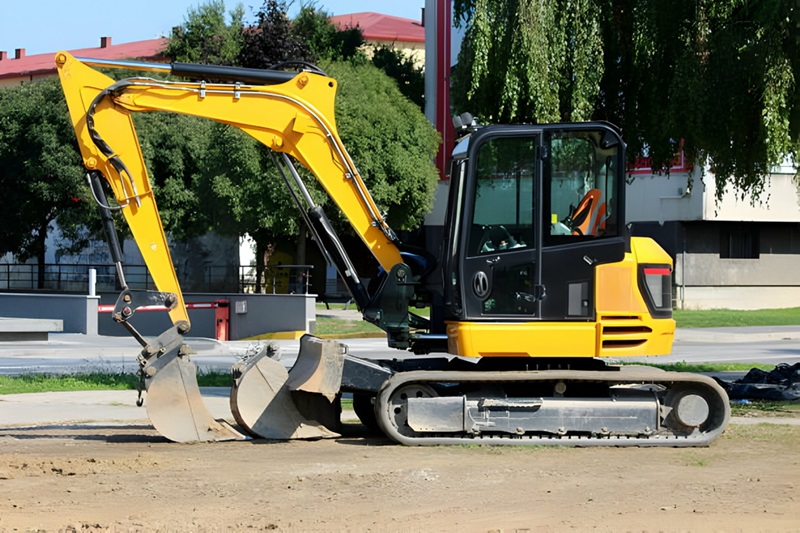Important Features to Look for When Purchasing a Mini Excavator

In the world of construction and landscaping, innovative tools are instrumental in making work more efficient and productive. One such tool that is becoming increasingly popular for home and small-scale projects is the mini excavator. Unlike their larger counterparts, mini excavators are designed to perform well in a compact space. They offer the same power and efficiency but with the added benefits of flexibility, mobility, and convenience. This is an integral element tool to have in one’s arsenal, whether you are a homeowner embarking on a DIY project or a construction firm engaged in various site applications.
Mini excavators are a testament to how far we’ve come in terms of technological revolution in machinery. These relatively small machines pack a punch when it comes to performance, proving that size doesn’t always equate to power. They open new avenues for home construction projects, landscape gardening, and minor civil works, taking the hassle and strain out of labour-intensive tasks.
The reasons for their growing popularity are manifold. They can access restricted spaces, thus, expanding work scope and applicability. Their lightweight design doesn’t compromise the ground conditions and they come at a fraction of the cost of full-size excavators. This treaded tool is not a stripped-down version of a full-size excavator; it’s a powerhouse in its own right with unique, user-friendly features.
However, it is a significant financial investment, thus the selection process demands careful thought. There is no one-size-fits-all mini excavator. One should be aware of their specific project needs, understand the features offered by different models, and compare buying options to make an informed decision.
Getting Familiar with Mini Excavators
Mini excavators, also known as compact excavators, weigh less than 20200 lbs and come with a standard backfill blade and an independent boom swing. The purpose of these tiny powerhouses is vast as they are used for digging trenches, foundations, holes, and for demolition, material handling, or forestry work. Their small size and rotatable cab movement allow maneuverability in tight spaces, making them an ideal choice for indoor work or work in congested areas.
In terms of types, you have choices of tail swing models, zero-tail swing models, and conventional mini excavators. The tail swing models have the rear part of the machine that extends beyond its tracks, excellent for tough and extra digging tasks. The zero-tail swing models, on the other hand, have their rears contained within the track width, enhancing the maneuverability in tight spaces. Lastly, the conventional mini excavators may lack the specialized features of the other two types but offer a balanced performance in any conditions.
To further grasp the mini excavator world, there are few common terms you need to know. ‘Operating weight’ refers to the total weight of the machine, including the operator and full-fuel tank. ‘Horsepower’ is the engine’s power output, generally, higher horsepower means more robust performance. ‘Dipper’ refers to an extension of the machine’s arm that performs tasks like digging. ‘Reach’ corresponds to the maximum depth the machine can dig. This understanding will help create a better connection with your machine and smoothens the buying process.
Key Factors when Purchasing a Mini Excavator
The road to purchasing the right mini excavator revolves around careful consideration of a few crucial factors. Firstly, you need to pinpoint your project needs. Are you looking to dig trenches or holes, lift loads, demolish small structures, or perform landscaping work? Identifying the key requirement helps narrow down the choices.
Next, the size of your property will drive your decision-making. For narrow spaces or indoor tasks, zero-tail swing models work best, whereas for larger spaces with tough excavation tasks, tail swing models are more appropriate. The expected lifespan of your mini excavator and the maintenance it requires should also affect your decision, along with the availability of spare parts.

In-depth Look at Key Features
Examining Size and Weight
The size and weight of your mini excavator can significantly impact the operability and performance. Smaller models are much easier to transport and can be moved easily without a specific license. These models also allow maneuverability in tight spaces where larger ones cannot reach. On the other hand, heavier machines provide more digging power and stability, though they may impact the ground conditions.
Balancing Engine Power and Digging Depth
Engine power and digging depth are two inter-related aspects of mini excavators. A more powerful engine will deliver higher digging force and enable the machine to tackle heavy-duty tasks. Ensure that the engine’s Horsepower matches your project needs. As for digging depth, different models offer different reaches. While deeper digs are beneficial for certain projects, sometimes a less deep but more wide-ranging reach is useful. Therefore, choosing the right balance based on your specific needs is vital.
Reflecting on Attachments
Attachments can significantly enhance the functionality of your mini excavator. These additions can modify your compact tool to perform an array of tasks ranging from breaking rocks, drilling holes, ripping out roots, and even snow plowing! Common attachments include breakers, augers, and grading buckets. Selection of attachments should be based upon the nature of tasks involved in your project.
Scrutinizing Technical Specifications
A mini excavator might have all the right features and additions, but their value could be undermined if the technical specifications do not align with your needs. A key consideration is the hydraulic system type, which typically falls into either open-center or closed-center systems. This determines the hydraulic power and speed and is matched to the engine power for optimum performance.
The undercarriage design impacts the stability of mini excavators. Choices range from rubber tracks for softer terrains and minimal ground disturbance to steel tracks for durability and traction. Lastly, check out the output potential of your mini excavator, which refers to the maximum volume of work your excavator can handle. It’s important to match this with your project requirements.
Accommodating Maintenance and Spare Parts Availability
Investing in a mini excavator is not a one-time expense. It requires regular maintenance and replacement of parts to ensure peak performance. Always factor in the cost of both routine and unexpected maintenance.
One key consideration is the availability of spare parts. Different brands and models may have different accessibilities when it comes to spare parts. It is always beneficial to opt for machines that have readily available parts in the market. Delay in getting the required parts can cause project delays and impact productivity.
Exploring Buying Options: New vs. Used Mini Excavators
Buying a new mini excavator guarantees you’ll have a machine in mint condition, with updated technology, and possibly a manufacturer’s warranty. However, it can be expensive and might depreciate swiftly.
On the other hand, used mini excavators are a budget-friendly option, particularly if you need it for short-term projects. However, there can be risks associated with maintenance issues or worn-out parts. Regardless of the choice, it’s imperative to check the machine thoroughly or purchase from a trusted dealer.
Delving into Training and Safety Considerations
Operating a mini excavator isn’t a task that should be taken lightly. Operators should be adequately trained in using the machine, reading and understanding the operator’s manual, and handling emergency situations.
Safety should be the prime concern when operating any heavy machinery. It includes wearing appropriate safety gear, maintaining regular checks on the tool, and observing all safety procedures while handling it. It’s also important to make sure the workplace is secure, without any loose objects that can obstruct the operation.
Conclusion
From small construction sites to Pro landscaping and construction, mini excavators have steadily been becoming a new revolution within the market. With our products, you are assured of a service that would get to areas where other equipment may be bulky to reach and at the same time has the least impact on the ground and is cheaper than most of the equipment in the market. Before deciding to obtain a mini excavator, you ought to take into mind four factors: your requirements, the technical characteristics, the benefits of new against used machines and finally, your budget.
It is crucial to learn the diversity and variability of mini excavators and how they work in an effort to improve the morale of projects being worked on. Spend time understanding the various models, attachments, and the amount of work that needs to be put in keeping it sustained constitute vital information when seeking to acquire this piece of equipment. Moreover, when operators are knowledgeable, professionals and safety precautions are utilized to the utmost, this tool is an advantage.
In conclusion, mini excavators are not the smaller version of large excavators; instead, they are specialized, high-performing machines capable of undertaking any construction or landscaping job. However, when the correct option is made, a mini excavator is one of the most valuable tools to own due to the versatility, manoeuvrability, and efficiency needed to finish a variety of work sites successfully.